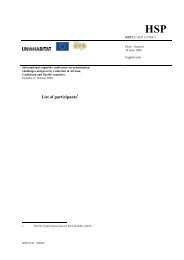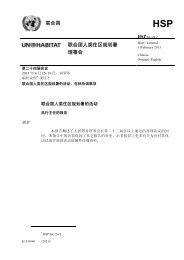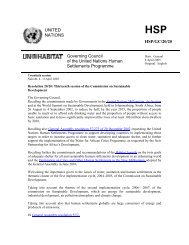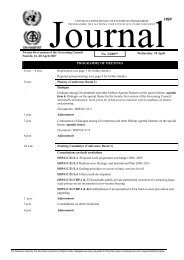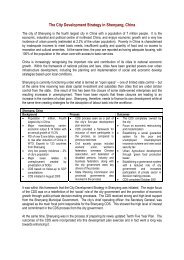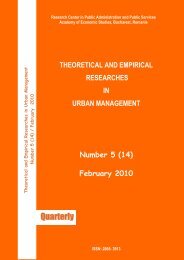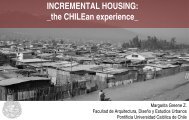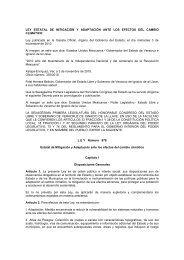Planning for Climate Change - UN-Habitat
Planning for Climate Change - UN-Habitat
Planning for Climate Change - UN-Habitat
Create successful ePaper yourself
Turn your PDF publications into a flip-book with our unique Google optimized e-Paper software.
<strong>Climate</strong> <strong>Change</strong>: A Review<br />
of research that indicates increased rates of injury and death from flooding in<br />
urban areas (especially in Africa, Asia, Latin America and the Caribbean) with<br />
inadequate drainage and flood protection systems.<br />
The impacts of increased/intensified rainfall will vary depending upon the region<br />
(i.e., different regions are <strong>for</strong>ecast to be more subject to increased/intensified<br />
rainfall than other areas) and the urban area’s level of development and<br />
infrastructure. For example, some lesser-developed cities may have more<br />
pervious or unpaved areas where rainfall can be more easily absorbed<br />
(absorption rates will depend on how parched the unpaved or pervious land is).<br />
Other cities may have more developed storm water management systems and<br />
infrastructure with which to manage the increased/intensified rainfall events,<br />
although the intensity of the events may well overwhelm even the most<br />
comprehensive systems. Urban planners play an important role in the<br />
development and upkeep of stormwater systems and can help make sure that<br />
new roads, buildings and infrastructure include stormwater features (e.g.,<br />
infiltration areas, pervious surfaces, impoundment areas, rainwater gardens) in<br />
those regions facing increased/intensified rainfall episodes.<br />
Damaged sea wall, Sorsogon City. © <strong>UN</strong>-HABITAT / Bernhard Barth<br />
A Strategic, Values-based Approach <strong>for</strong> Urban Planners<br />
31






